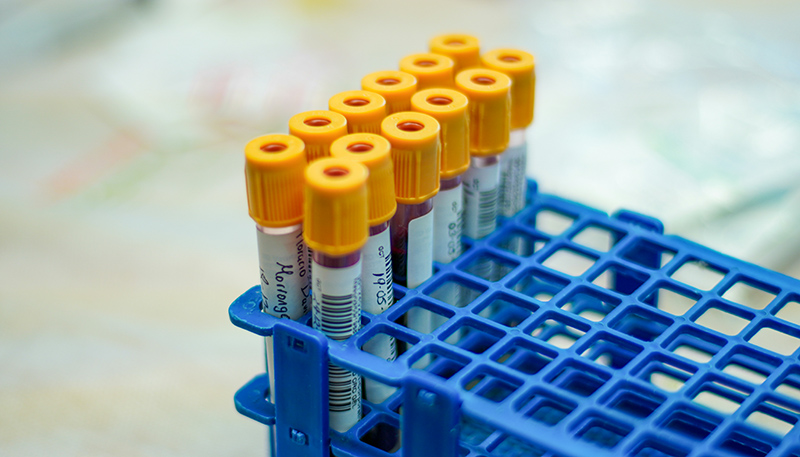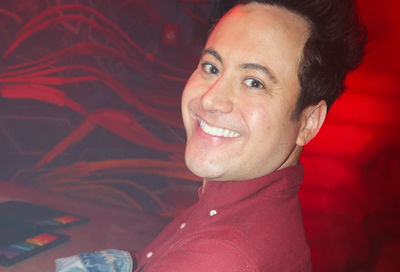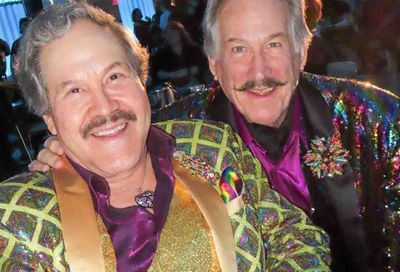Party Crasher
Leather community holds panel to discuss a 'Tina' drug crisis
Titan Bar held all the elements for a party Monday evening. Beyond the regular bar offerings, there was a buffet. The crowd of about 50 people filled the front half of the vast space — great turnout for 7 o’clock on a Monday night. Then there was Jason Hendrix, decked out in his International Mr. Leather 2004 sash, making his final public appearance as such before the IML conference in Chicago this weekend. Unfortunately, Tina was about to crash this party.
”Tina” is the common name for methamphetamine, also known as crystal meth. Monday, May 23, the local leather community — with sponsorship from Brother Help Thyself, The Center-Home for GLBT in Metro D.C., and Titan Bar — was sounding the alarm about the drug’s continuing rise in the community.
”The big question is: Are we doing enough in D.C. about this crisis? Â… I don’t think so,” asked Michael Sessa, president of The Center and a fixture among D.C. leather folks. He set the tone for the evening, explaining how methamphetamines had wreaked havoc on his life as he watched his partner succumb to addiction.
For this educational discussion, produced by Sessa and his fellow leather enthusiast Jose Gutierrez, a panel of six presented various viewpoints under a single heading: ”The Leather Community Wants You To Know: The Truth About Crystal Meth.” Only two things were missing: more seating and time. Toward the back of the crowd it was standing room only. And running 45 minutes longer than its scheduled hour and half, it was a long time to stand.
Hendrix, the first panelist, took little time to make his point: He knows people who do crystal meth and then engage in ”bare-backing,” anal intercourse without condoms. He reinforced that while Tina was the headliner Monday night, her escort was HIV.
”For most of the people we’re focusing on tonight, it’s the fusion of crystal meth and sex,” said David Schwartz, a psychologist and long-time volunteer with Whitman-Walker.
Methamphetamine use carries one pile of health risks, HIV another. But panelists made a number of points about how easily and disastrously the two intersect. First, the drug makes it more likely that a person using it will become HIV positive, the panelists agreed. The drug — seemingly and oddly in gay men only — creates a feeling of hyper sexuality. Add to that, in most users it causes insomnia and impaired judgment.
”With all those mixed together, you have a very bad combination,” said Yasir Shah, a program assistant at the D.C. Department of Health’s HIV/AIDS Administration. He illustrated a scene of gay men using crystal meth at a dance club that might close at 6 a.m. ”They’re not ready to stop partying yet.”
The venues likely available to this anecdotal crew to continue their methamphetamine highs would likely be in private residences, known as ”chem” (chemical) or ”PNP” (party ‘n’ play) parties, Shah continued. ”Are there condoms there? Probably not.”
Shah recalled a client who found himself in a similar situation, having turned to methamphetamines to counter lagging self-esteem.
Shah added that the Internet provides another avenue for someone high on crystal to easily find a partner — or often partners — for casual sex. ”It’s a huge breeding ground,” he insisted. ”D.C. chat rooms are full of people who have ‘PNP’ next to their chat names.”
To make things worse, Shah pointed to statistics indicating that gay men who use crystal meth are twice as likely to report having had unprotected, receptive anal intercourse, compared to their peers who don’t use crystal. A contributing factor, Shah explained, is that crystal meth can cause impotence, leaving a man high on crystal little alternative but to ”bottom” if he’s determined to have intercourse.
While these linkages between using crystal and sero-conversion provide one challenge for healthcare workers and the community, a second challenge is what using crystal meth does to people who already have HIV.
Methamphetamines can take a serious toll on the heart, immune system, and other biological functions. Kevin Shipman, manager of the Office of Special Populations, Addiction Prevention and Recovery at the D.C. Department of Health, asked the audience to imagine an HIV-positive person whose viral count is low, and whose T-cells are in the black.
”Keep smoking Tina, and she’s probably going to take that away from you,” he cautioned, emphasizing the drug’s deleterious affect on users’ immune systems, like stimulating HIV production and lowering T-cell counts. ”Tina is a bad woman. Tina is simply crack with an attitude. This is a bad-ass drug.”
Shipman underscored the magnitude of methamphetamine use in D.C., pointing out that in 2000, about 35 percent of Whitman-Walker addiction clients were using crystal meth. ”Now, about 75 percent of admissions are for methamphetamine,” he said, adding that the No. 1 addiction spot had always been reserved for alcohol. ”Not anymore. An illegal substance has beaten alcohol. We’ve never seen this kind of trend in any population.”
While HIV and Tina often show up arm-in-arm, Sgt. Brett Parson of the Washington, D.C., Metropolitan Police Department’s Gay & Lesbian Liaison Unit was there to remind everyone that the judicial system is often not too far behind.
”In my line of work, this is a problem we really want to focus on,” said Parson. ”I want you to know what the law is.”
The law, he said, classifies methamphetamines as a ”schedule 2” drug. This means carrying a tiny amount may be only a misdemeanor. It’s for a jury to decide whether an amount is great enough to be distributed. If so, the crime jumps to a felony. Jail time from misdemeanor to felony can range from less than a year to up to 15.
While the law can come down on users of crystal, the drug can also get in the way of the law when it’s trying to help users, Parson warned. He said he gets reports two-to-three times per week from gay men who have let strangers they met on the Internet. ”And then he disappeared, and such and such was gone,” he said, explaining that while the Internet makes it convenient to cruise for sex, the technology makes it just as easy for criminals to find victims made vulnerable by crystal meth.
”There are ramifications far beyond the simple use of these drugs,” said Parson, adding that cases with crystal users as plaintiffs usually end in plea bargains, as prosecutors don’t want to put crystal addicts on the stand. ”I see the crisis, the absolute panic when you can no longer control your life.”
Edward Liu, a health educator at Whitman-Walker Clinic, talked about harm reduction efforts, which are intended to reduce at least some of the harmful effects of meth use for those who are unable or unwilling to stop using. A number of health professionals and community activists in the audience seemed to shift in their seats with collective discomfort as Liu advised those anonymous audience members who are determined to use crystal. Parson’s eyebrows raised noticeably.
”I’m not here to teach you how to do drugs. I’m here to suggest to you what you can do to protect yourself,” Liu began. He offered a list of ways for someone planning a crystal-meth party to reduce risk: leave condoms anywhere you think you might have sex, from the bed to the shower to the sofa to the kitchen table; invest in copious amounts of lube; purchase only a small amount of crystal, decreasing the chances of a binge; limit the number of sexual partners you invite; and don’t inject it.
Opening the floor to Q & A, the question voiced by Sessa, but seemingly on everyone’s mind, was what to do if a loved one is using methamphetamines.
”Do you need to let them hit rock bottom? What do you say to someone who’s on it?” Sessa asked.
Schwartz took the question: ”You want to talk to them in the second phase of the crash. That’s the optimal time,” he said, pointing to when the drug has left a person’s system, but he’s not yet begun planning his next drug use. “Don’t talk to them in the throes of a using drama. That’s not a productive time to talk to the addict. Don’t use blame. You’ll get further with expressions of concern and caring. The worst thing you can do is be the nag or the adversary.”
Bruce Weiss, executive director of the Sexual Minority Youth Assistance League wanted a plan for a community response. ”We can’t count on the government to respond,” he said. ”What I feel like I haven’t heard much of is what we can do as a community. How are we going to change this culture?”
Parson answered to the loudest applause of the evening: ”Stop enabling.”
Despite some compliments offered to Mayor Anthony Williams for listening to the district’s gay community, to D.C. Councilmember David Catania (I-At Large) for trying to bring more attention to methamphetamine addiction, and to others, BHT Executive Director Larry Stansbury echoed Weiss’s call for a community response.
”We can set a vision for ourselves. Tonight, we started,” he said. ”We don’t have to wait for anybody else to do it for us.”
Support Metro Weekly’s Journalism
These are challenging times for news organizations. And yet it’s crucial we stay active and provide vital resources and information to both our local readers and the world. So won’t you please take a moment and consider supporting Metro Weekly with a membership? For as little as $5 a month, you can help ensure Metro Weekly magazine and MetroWeekly.com remain free, viable resources as we provide the best, most diverse, culturally-resonant LGBTQ coverage in both the D.C. region and around the world. Memberships come with exclusive perks and discounts, your own personal digital delivery of each week’s magazine (and an archive), access to our Member's Lounge when it launches this fall, and exclusive members-only items like Metro Weekly Membership Mugs and Tote Bags! Check out all our membership levels here and please join us today!
























